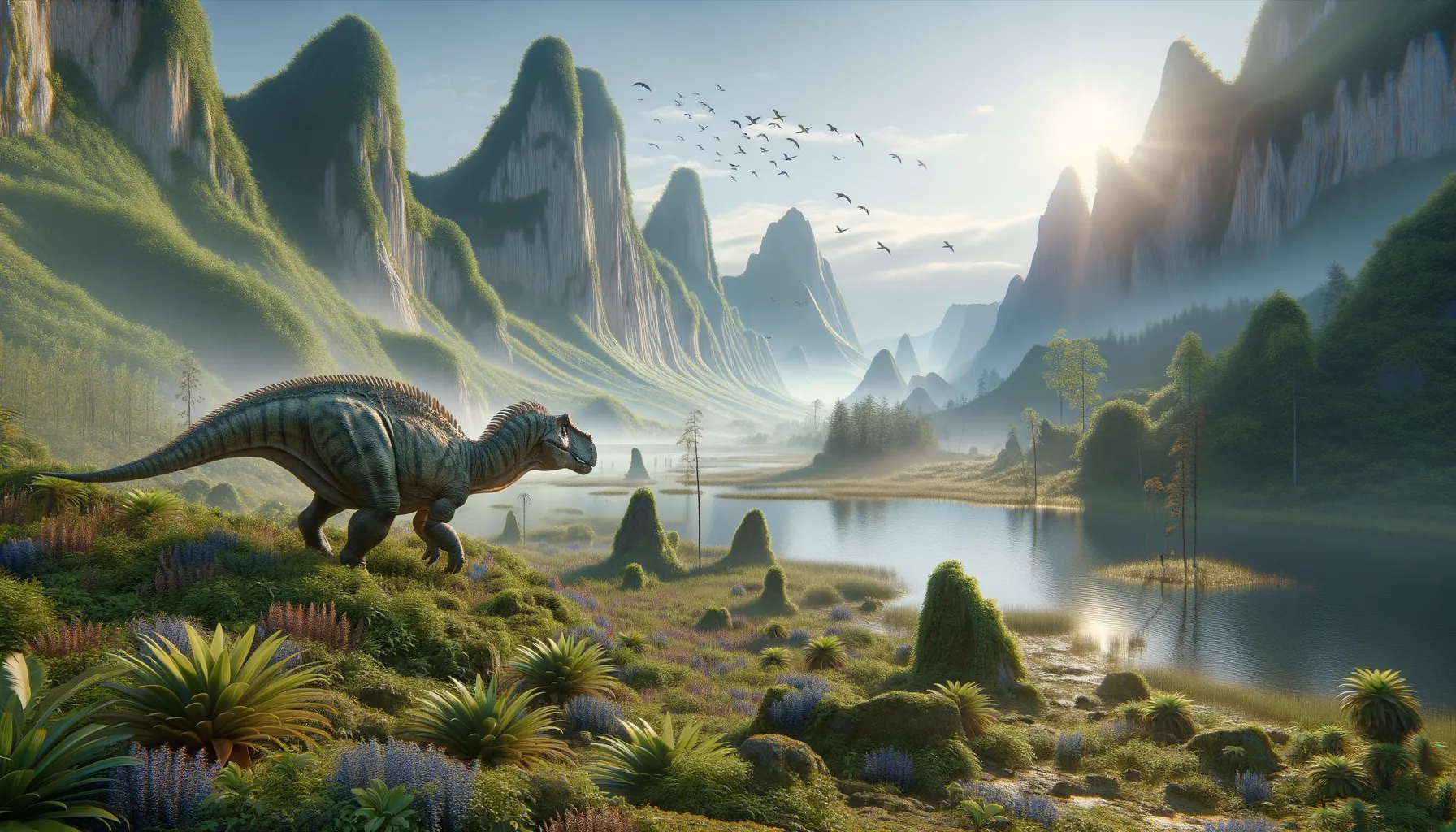
Bihariosaurus
A gentle giant of the Cretaceous forest.
Period
Cretaceous
Length
Roughly 6 meters from nose to tail.
Height
Around 2 meters tall at the hips.
Weight
Approximately 500 kilograms.
Bihariosaurus was a fascinating dinosaur from the Cretaceous period, known for its relatively moderate size and significant mobility. It lived predominantly in what is now Eastern Europe, navigating through lush, varied environments. Its herbivorous diet contributed to its role as a peaceful resident amid the prehistoric ecosystem. Though not as large as some of its contemporaries, Bihariosaurus adapted well to its surroundings, making the most of its environment for survival and growth.
Diet
Bihariosaurus was herbivorous, feeding primarily on plants such as ferns and cycads. Its diet might also have included other available vegetation like leaves and smaller shrubs.
Hunting
As a herbivore, Bihariosaurus did not hunt but instead foraged for edible plants. It moved through its environment, sampling a diverse range of flora.
Environmental challenges
Bihariosaurus faced challenges such as climate changes and the occasional presence of predators. Natural disasters and shifting ecosystems also posed significant survival challenges. It adapted to roaming widely for food as resources became scarce in drier seasons.
Speed
Moderate pace with potential bursts for quick escapes.
Lifespan
Estimated lifespan of around 20 to 30 years.
First discovery
Discovered in the early 2000s in Eastern Europe.
Fun Facts
- Bihariosaurus was a plant-eating dinosaur that lived during the Late Cretaceous period.
- It was first discovered in Romania and is named after the Bihor region where its fossils were found.
- Bihariosaurus belonged to a group of dinosaurs known as ornithopods, which were known for their ability to walk on two or four legs.
- Unlike some of its larger relatives, Bihariosaurus was a relatively small dinosaur, about the size of a large dog.
- Scientists believe Bihariosaurus lived in a lush environment with plenty of vegetation to feed on.
- Its discovery has helped paleontologists understand more about the diverse environments in which dinosaurs thrived in Europe.
- Fossils of Bihariosaurus are not very common, making each new find critical for understanding its biology and ecology.
Growth and Development
Bihariosaurus experienced steady growth with periods of rapid development, especially in the juvenile stages. Growth was fueled by abundant plant availability in its habitat. Parental care likely influenced early-stage development, offering some protection in the dangerous Cretaceous landscape.
Habitat
This dinosaur thrived in lush forests and areas with abundant plant life. It likely inhabited regions with a mix of woodland and open plains that offered cover and food. Seasonal climate shifts shaped its habitat, influencing migration patterns and local flora.
Interaction with other species
Bihariosaurus may have coexisted with a variety of species, maintaining a relatively low profile among larger predators. Its peaceful nature meant minimal conflict with other herbivores. However, competition for resources with similar-sized dinosaurs was possible.
Natural lifespan
In natural settings, it lived up to about 25 years.
Reproduction
Like many dinosaurs, Bihariosaurus likely laid eggs, with nests built in secure, hidden locations. Reproduction involved careful planning to safeguard eggs from predators. Parental care post-hatching might have been vital for juvenile survival.
Social behaviour
Bihariosaurus may have exhibited herd behavior for protection against predators. Social structures could have included familial groups centered around elders guiding younger members. These groups enhanced survival chances through shared vigilance.
Fossil locations
Fossils have primarily been found in the Carpathian Basin, offering insights into Cretaceous European paleo-biodiversity. Discoveries in sedimentary rock layers revealed much about its environment and contemporaneous species. Research continues to unveil more about its distribution across similar ecosystems.
